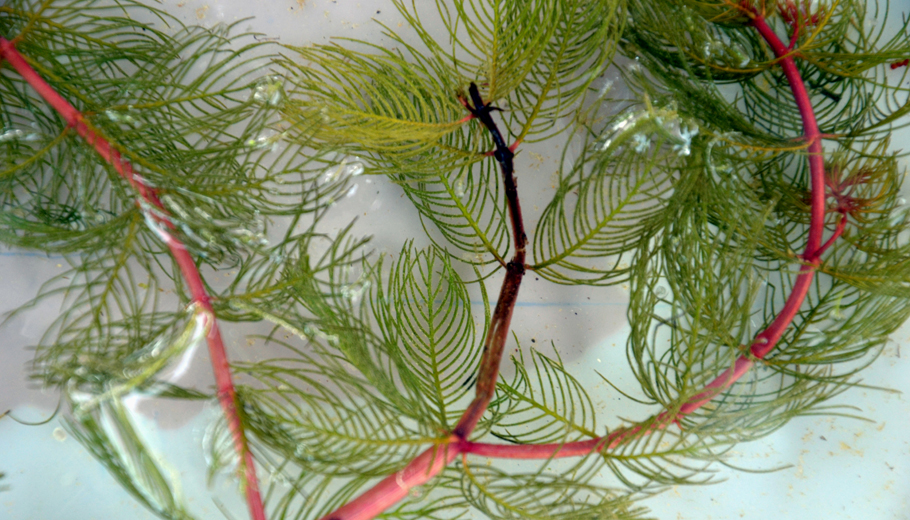
Weevils vs. weeds
By James Card
Most people think of weevils as grain-eating bugs that ruin stored food.
But there is a species of weevil on Shadow and Mirror Lakes that is eating Eurasian water-milfoil, an invasive aquatic weed that forms dense mats that tangles up boat propellers, kayak paddles and swimmers alike.
Amy Thorstenson, an advising director of Golden Sands Resource Conservation and Development organization, presented a workshop on the shoreline of Shadow Lake to explain the ecological dynamics of how this tiny insect is a friend of Wisconsin lakes plagued with invasive milfoil.
There are two kinds of milfoils: Northern water-milfoil which is native to Wisconsin and provides habitat for fish and Eurasian water-milfoil, the non-native invasive that causes problems.
Identification between the two can be difficult but possible. A magnifying glass and a field note ID card is helpful for studying the differentiating leaflets. What makes it more difficult is that the Northern and Eurasian water-milfoil can hybridize.
“It can look like both. This out here [from Shadow Lake] is true Eurasian but it looks a little hybrid to me. We submitted it for DNA analysis twice,” said Thorstenson.
The silver lining is that the Wisconsin’s native Milfoil Weevil (Euhrychiopsis lecontei) – that has co-evolved with the native Wisconsin water-milfoil – finds the non-native Eurasian milfoil more delicious and nutritious. It exudes some more sugar alcohols that make it tastier and it does not have the defenses of the native milfoil.
“It prefers to feed on that so generations will slowly shift to feeding on Eurasian which can keep it at control levels if there is enough weevil activity on the lake,” said Thorstenson.
“In Wisconsin, its [Eurasian milfoil] the one invasive that the state spends the most money on,” said Chris Hamerla, an aquatic invasive species coordinator with Golden Sands assisting with the workshop. He said when lake management groups spend money and work on handling aquatic plants, it’s usually for Eurasian water-milfoil.
Encouraging weevils
There is an army of weevils working for free that live in people’s waterfront backyards. Weevils overwinter on shore and hibernate under duff material in the first 35 feet of shoreline buffer. The easiest way to help the weevils is to stop mowing the shoreline buffer after Labor Day and do not rake the leaves. Resume regular yard care after Memorial Day.
“These weevils don’t want anything to do with your rice or crackers in your house. They are extremely well behaved. They do things: they eat milfoil and hide on shore and then they come back and eat milfoil and come back and hide on shore. You are not going to find them anywhere else because they are so dependent on milfoil they do not stray,” said Thorstenson.
The weevils are about the size of a sesame seed and have big eyes and a long snout. The females lay eggs on the meristem and the grub-like larvae eat their way into the stem and feed on vascular tissues, weakening the plant and hollowing out the stem. Adult weevils will feed on milfoil leaves and stem tissue.
While kayaking, fishing or swimming, the easiest way to identify Eurasian water-milfoil being eaten by weevils is to look for darkened spaghetti-like stems.
Thorstenson has raised weevils and stocked lakes to release them upon Eurasian water-milfoil. Undersized bluegills and sunfish are the biggest predators of milfoil weevils so she did a food web experiment on Lake Joanis in the Schmeeckle Reserve in Stevens Point.
Thorstenson and her team sunk 25 metal-framed cages into Eurasian milfoil spots that prevented the sunfish and bluegill from getting inside. Lake Joanis had very few weevils and with the protection of the cages they were allowed to multiply. They ate all the milfoil within the cages and moved out.
Years later, the Eurasian water-milfoil still exists in Lake Joanis but it is hard to find.
